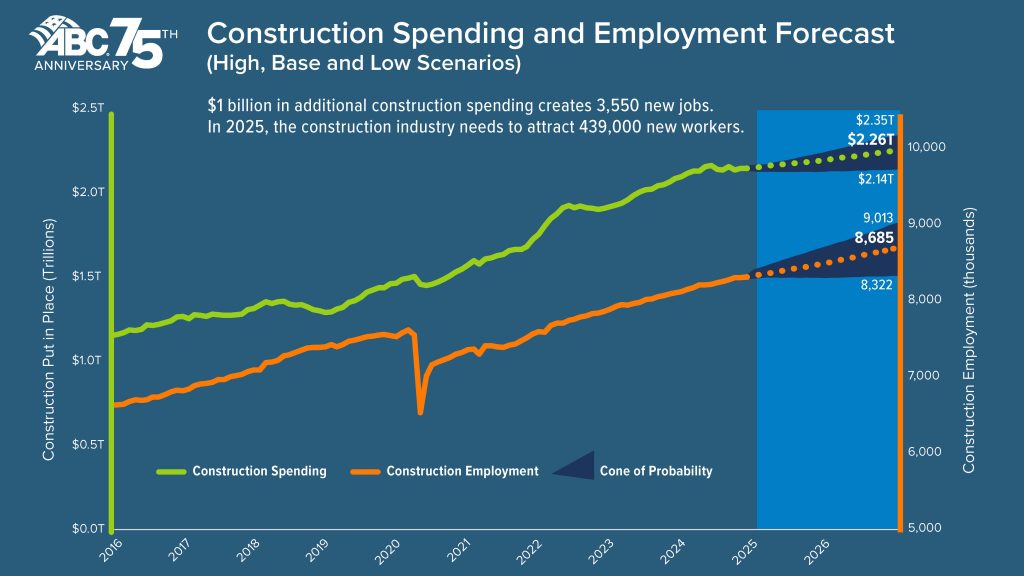The worker shortage is something I have been covering here at Constructech for several years, okay perhaps more than just a few years now, as it has been an ongoing struggle for construction companies in just about every state. Now, we see ABC (Associated Builders and Contractors) has released estimates for how many new workers will be needed between 2025 and 2026 just to meet anticipated demand for construction services. And let us be very clear, this was long before all the devastating fires in Los Angeles and the hurricanes in the Carolinas.
The numbers aren’t surprising to those following this blog—as they are on pace with previous estimates—but they are still concerning. The association suggests 439,000 net new workers will be needed in 2025 and 499,000 will be needed in 2026, as spending will pick up amid presumed lower interest rates. Honestly, these numbers are too conservative if you look at what we really need to rebuild these communities alone. But let’s set aside this for a moment.

A quick debriefer on how ABC pulls this data. The organization uses a combination of historical data and inflation-adjusted construction spending growth and payroll construction employment from government statistics. It then anticipates demand for construction workers at a rate of approximately 3,550 jobs per billion dollars of additional spending. It also takes into consideration current job openings, unemployment, and projected retirements and exits. It is an educated estimate.
There is some good news in all of this though. The industrywide workforce has become younger in the past several quarters, with the median construction workers now younger than 42 for the first time since 2011. Still, the construction industry must be prepared. Interest rates will remain high in 2025 before dropping next year, which could lead to an influx in work in 2026.
What is needed to address this? I write about this often, but let’s consider some opportunities for garnering interest in the construction industry as a career.
- Start young. Encourage and incite interest in construction at the grade school and junior high school levels.
- Leverage technology where applicable to both entice the younger generation and to offset the gap.
- Consider pay increases, good benefits, and creating a culture of safety on the jobsite.
I want to touch on that last point for a minute here because safety was a big topic of conversation at World of Concrete last month. Creating a culture of safety can help attract and retain workers in the construction industry. We also must look at mental health as well.
At World of Concrete, we saw ACPA (American Concrete Pumping Assn.) announce the launch of the Coworker Safety Training program for contractors who work with and around concrete pumps. The certificates enable contractors to demonstrate compliance with the education component of ASME B30.27, the safety standard for material placement systems. We need constant training and retraining of our workers, constantly reinforcing the basics of slips, trips, and falls.
Of course, this is only one example of how to ensure greater safety on a construction jobsite. Just last week, we saw new AR (augmented reality) IT support technology emerge that aims to enable technicians and on-site workers to resolve issues quickly. The Splashtop Augmented Reality hands-free tech compatibility with RealWear enables safer support and fixes for construction teams in hazardous work environments.

I have written many times about how innovation, engagement, and culture are key in this area. Very curious what you would add? What else needs to be done to attract and retain workers in the construction industry?
Want to tweet about this article? Use hashtags #construction #IoT #sustainability #AI #5G #cloud #edge #futureofwork #infrastructure #worker #safety


